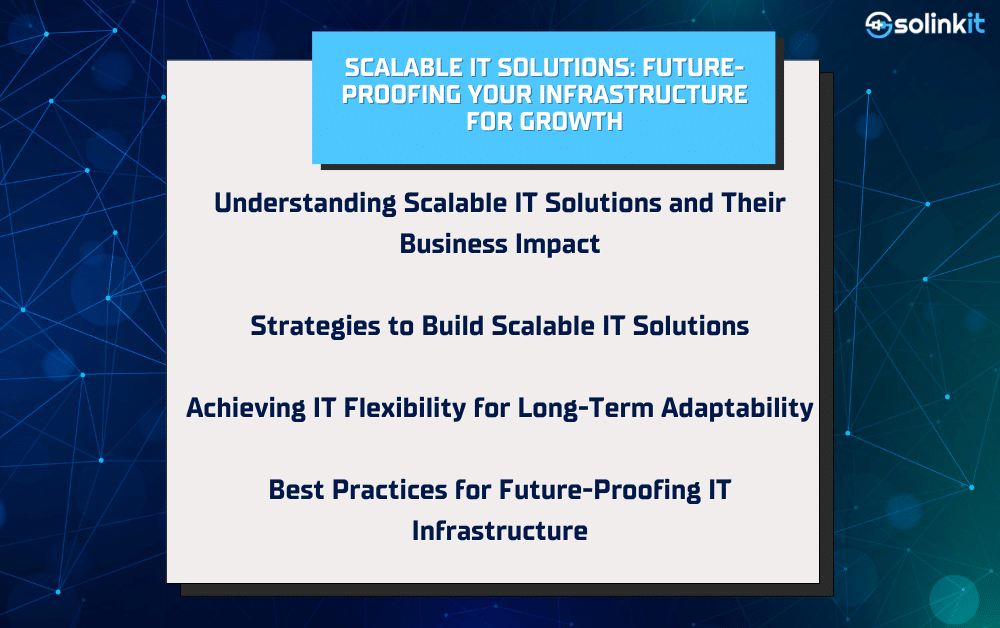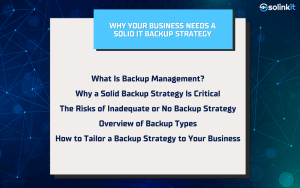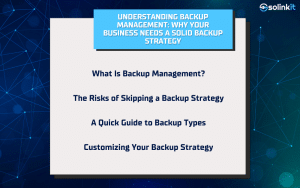As technology advances, businesses must ensure their IT infrastructure is built to support long-term growth and adaptability. Scalable IT solutions provide the flexibility to expand resources as demand increases while maintaining efficiency, security, and performance. Without scalability, businesses face bottlenecks, rising costs, and limitations that hinder their ability to innovate.
In Part 3, we explored how IT virtualization and containerization contribute to modernization. Now, in the final part of this series, we will focus on scalable IT solutions, explaining why they are critical, strategies to implement them, and best practices to future-proof your IT infrastructure.
Understanding Scalable IT Solutions and Their Business Impact
A scalable IT infrastructure ensures that a company can increase or decrease resources based on business needs without affecting system performance. Scalability is vital for handling surges in user activity, growing data volumes, and integrating new technologies seamlessly.
There are two primary ways to achieve scalable IT solutions. Vertical scaling, or scaling up, involves adding more power to existing servers, such as increasing CPU or RAM. Horizontal scaling, or scaling out, involves adding more servers or distributed systems to share workloads. Businesses must determine the best approach based on their operations, workloads, and future growth plans.
A lack of scalable IT solutions can lead to performance slowdowns, higher operational costs, and an inability to support emerging technologies. Companies that proactively invest in scalability will have the competitive advantage of agility and resilience in a constantly evolving digital landscape.
Strategies to Build Scalable IT Solutions
To develop scalable IT solutions, businesses must adopt technologies and practices that support seamless expansion while maintaining system reliability.
One of the most effective ways to ensure IT scalability is by leveraging cloud computing. Cloud-based services provide on-demand scalability, allowing companies to increase or decrease resources as needed. Public, private, and hybrid cloud environments offer different levels of control and flexibility based on business requirements.
Another key approach is adopting microservices architecture, which breaks down applications into smaller, independently scalable services. Unlike traditional monolithic applications, microservices allow businesses to scale specific functions without affecting the entire system. This leads to faster deployment, improved reliability, and lower infrastructure costs.
Load balancing is crucial for scalable IT solutions, as it distributes incoming network traffic across multiple servers to ensure stability during peak usage. Businesses can also implement redundant systems and failover mechanisms to prevent downtime in the event of system failures.
Automation plays a significant role in IT scalability, helping businesses streamline infrastructure management. AI-driven monitoring, predictive analytics, and self-healing systems optimize resource allocation and minimize human intervention, making IT operations more efficient and cost-effective.
Achieving IT Flexibility for Long-Term Adaptability
While scalable IT solutions ensure growth, flexibility allows businesses to adapt to new technologies and evolving market demands. A flexible IT environment enables companies to transition between different infrastructures, integrate emerging technologies, and optimize costs effectively.
Hybrid and multi-cloud strategies are essential for IT flexibility. Businesses can balance workloads across different cloud providers or combine on-premise and cloud environments to reduce reliance on a single vendor. This approach enhances resilience and provides better disaster recovery options.
Containerization and orchestration, managed through tools like Kubernetes, further improve IT flexibility. Containers allow applications to be moved easily between different cloud environments, making scaling more efficient. Kubernetes automates workload distribution, improving efficiency and ensuring that applications run smoothly across various IT infrastructures.
Artificial intelligence and machine learning also contribute to IT flexibility by providing real-time insights into system performance and resource utilization. Businesses that integrate AI-driven automation can scale resources dynamically, reducing operational costs and improving efficiency.
Best Practices for Future-Proofing IT Infrastructure
Developing scalable IT solutions requires a long-term strategy to prevent infrastructure limitations. Businesses must design their IT systems with growth in mind, ensuring they can scale without costly reconfigurations or disruptions.
Security and compliance should scale alongside infrastructure expansion. As companies grow their IT environments, they must implement robust security measures such as access controls, encryption, and regulatory compliance to protect sensitive data and mitigate risks.
Continuous monitoring and optimization are essential for maintaining scalable IT solutions. Businesses should leverage observability tools to analyze system performance, identify bottlenecks, and adjust infrastructure resources in real time. Proactive monitoring helps prevent downtime, optimize costs, and ensure seamless scalability.
Employee training and IT governance play a vital role in supporting IT scalability. As businesses integrate new technologies, IT teams must stay up to date with best practices, automation tools, and security protocols to manage scalability effectively. Investing in IT skill development ensures that infrastructure remains adaptable to future needs.
Conclusion & Next Steps
A scalable IT infrastructure is crucial for businesses looking to remain competitive, agile, and efficient in a rapidly evolving digital landscape. By implementing scalable IT solutions, companies can optimize performance, reduce costs, and seamlessly expand their operations as needed.
Throughout this series, we have explored the critical steps in modernizing legacy IT systems. In this final part, we highlighted the importance of scalable IT solutions and provided actionable strategies to future-proof IT infrastructure.If your business is ready to develop a scalable IT infrastructure, SoLinkIt can help you design and implement solutions tailored to your needs. Contact SoLinkIt today to ensure your IT systems are built for future growth and long-term success.
Check Out the Full Series Below!
Part 1: Identifying and Assessing Legacy IT Systems
Part 2: Migrating Legacy Applications to the Cloud: A Step-by-Step Guide
Part 3: IT Virtualization: Transitioning to a Scalable and Efficient Infrastructure
Part 4: Scalable IT Solutions: Future-Proofing Your Infrastructure for Growth






